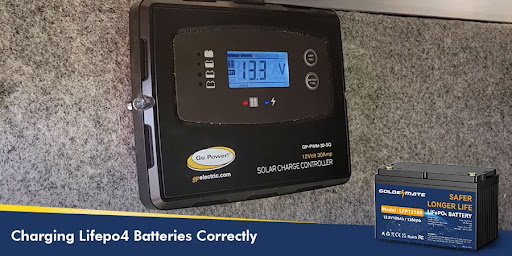LiFePO4 batteries have gained significant attention in recent years due to their high energy density, long cycle life, and enhanced safety features compared to other battery chemistries. However, to fully harness the benefits of LiFePO4 batteries, it is crucial to understand the importance of charging them correctly. In this article, we delve into the intricacies of charging LiFePO4 batteries, exploring best practices, common mistakes to avoid, charging methods, tools, troubleshooting, and real-world applications.
Understanding LiFePO4 Batteries
LiFePO4 batteries, also known as lithium iron phosphate batteries, are a type of rechargeable battery known for their stability, high energy density, and long cycle life. Composed of lithium iron phosphate as the cathode material, these batteries offer several advantages over traditional lithium-ion batteries, including better thermal stability, lower risk of thermal runaway, and reduced environmental impact due to the absence of toxic heavy metals.
Factors Affecting LiFePO4 Battery Charging
Charging LiFePO4 batteries involves considering various factors such as voltage requirements, current limitations, and temperature considerations. Unlike some other lithium-ion chemistries, LiFePO4 batteries typically have a lower maximum charging voltage and can be damaged if overcharged. Therefore, it is essential to adhere to the manufacturer’s recommended charging parameters to avoid compromising battery performance and safety.
Best Practices for Charging LiFePO4 Batteries
To charge LiFePO4 batteries correctly, it is essential to follow best practices that maximize battery longevity and safety. This includes adhering to recommended charging voltage and current limits, managing temperatures during charging to prevent overheating, and implementing monitoring and safety precautions such as using compatible chargers and employing temperature sensors.
Common Mistakes to Avoid
Several common mistakes can occur when charging LiFePO4 batteries, including overcharging, undercharging, charging at improper temperatures, and using incompatible chargers. Overcharging can lead to accelerated degradation and reduced battery lifespan, while undercharging may result in insufficient energy storage capacity. It is crucial to avoid these mistakes to ensure optimal battery performance and longevity.
Charging Methods for LiFePO4 Batteries
There are several charging methods available for LiFePO4 batteries, including constant voltage charging, constant current charging, and combination charging methods. Constant voltage charging involves applying a fixed voltage to the battery terminals until the charging current decreases to a predetermined level, while constant current charging involves supplying a constant current to the battery until it reaches its maximum voltage. Combination charging methods combine aspects of both constant voltage and constant current charging to optimize charging efficiency and battery health. Learn how to charge lifepo4 battery correctly for maximum efficiency and longevity.
Tools and Equipment for Charging LiFePO4 Batteries
When charging LiFePO4 batteries, it is essential to use chargers specifically designed for this battery chemistry to ensure compatibility and safety. Additionally, monitoring devices, software, temperature sensors, and controllers can help optimize the charging process and prevent potential issues such as overheating or overcharging.
Troubleshooting and Maintenance Tips
In the event of charging issues or battery degradation, troubleshooting and maintenance tips can help identify and address problems promptly. This may include monitoring charging parameters, inspecting battery connections, and implementing proper maintenance practices to extend battery lifespan and optimize performance.
Case Studies and Practical Examples
Real-world applications of LiFePO4 batteries demonstrate their versatility and reliability in various industries, including renewable energy storage, electric vehicles, portable electronics, and backup power systems. Success stories and lessons learned from implementing proper charging practices highlight the importance of adhering to recommended guidelines to maximize battery performance and safety.
Conclusion
Charging LiFePO4 batteries correctly is essential for maximizing longevity and safety while harnessing their full potential. By understanding the factors affecting LiFePO4 battery charging, following best practices, avoiding common mistakes, utilizing appropriate charging methods and tools, and implementing troubleshooting and maintenance tips, users can ensure optimal performance and reliability from their LiFePO4 batteries. As the demand for energy storage solutions continues to grow, proper charging practices will play a crucial role in unlocking the full benefits of LiFePO4 battery technology.






